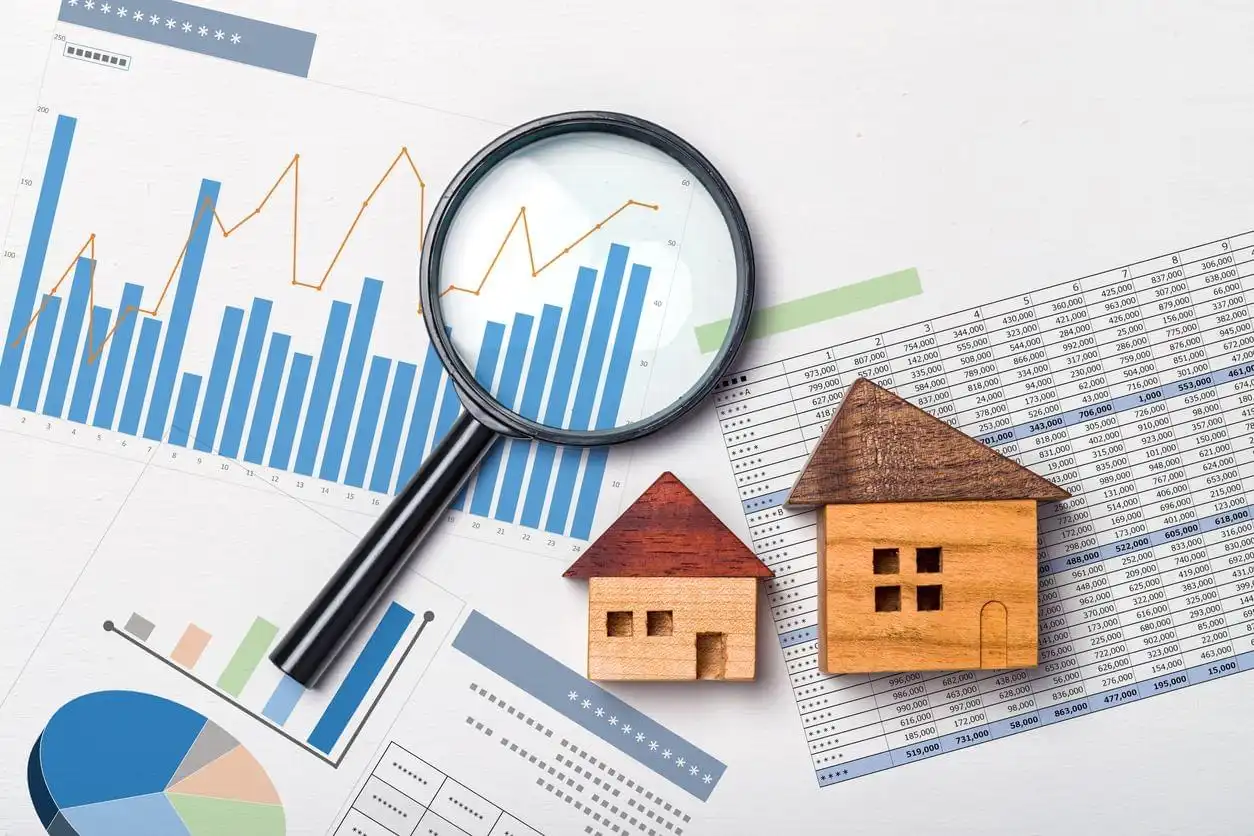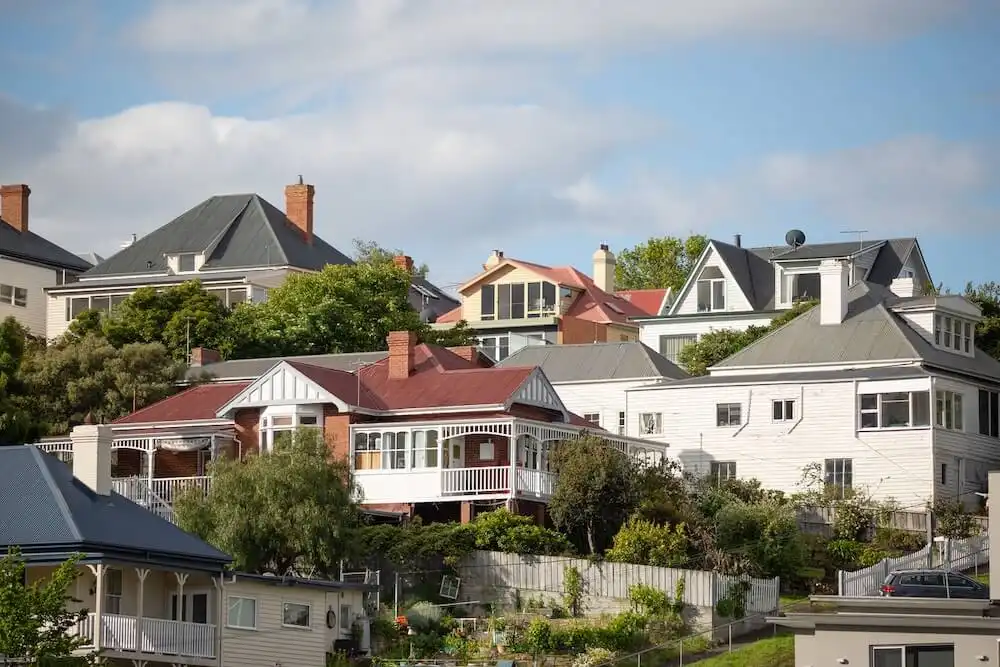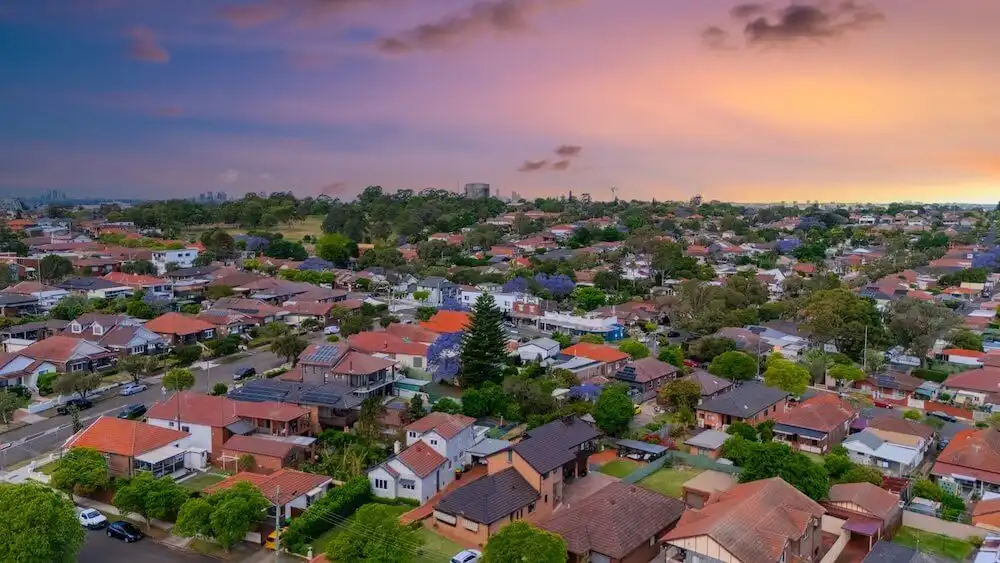Growth accelerates as the spring selling frenzy arrives
Australia's property markets have capped off a supercharged winter with the strongest month of price growth since May 2024.
The increase in activity is building towards what looks set to be a lively spring selling season for both sellers and buyers.
Find out what's up ahead in this month's market update.

Get a free property value estimate
Find out how much your property is worth in today’s market.
Australian property prices: August 2025
The national median property price rose +0.7 per cent over August, an acceleration over previous months, according to Cotality's latest report.
Five cities in particular had a very strong end to winter.
| Market | Month | Quarter | Annual | Median value |
|---|---|---|---|---|
| Sydney | 0.8% | 1.7% | 2.1% | $1,224,341 |
| Melbourne | 0.3% | 1.0% | 1.4% | $803,194 |
| Brisbane | 1.2% | 3.0% | 7.9% | $949,583 |
| Adelaide | 0.9% | 2.1% | 6.5% | $851,125 |
| Perth | 1.1% | 3.1% | 6.6% | $841,928 |
| Hobart | -0.2% | -0.6% | 2.6% | $680,315 |
| Darwin | 1.0% | 5.0% | 10.2% | $553,131 |
| Canberra | 0.4% | 1.5% | 1.6% | $872,957 |
| Combined capitals | 0.8% | 1.9% | 3.6% | $932,038 |
| Combined regional | 0.5% | 1.6% | 6.0% | $693,859 |
| Australia | 0.7% | 1.8% | 4.1% | $848,858 |
Source: Cotality (formerly CoreLogic)
Sydney home values saw a solid +0.8 per cent uplift for the month, while Melbourne had a more modest increase of +0.3 per cent.
Brisbane and Perth led the charge once again with gains of +1.2 per cent and +1.1 per cent respectively. Adelaide wasn't far behind at +0.9 per cent.
Darwin's rapid boom continued, adding another +1.0 per cent to prices, Canberra pushed up +0.4 per cent, and Hobart remained the outlier as the only capital city to see a slight decline.
Regional markets had a softer month this time around, though every state delivered positive movement.
"There’s been a clear turnaround for households relative to 2024 when high interest rates and cost of living pressures were weighing on balance sheets and the housing market," Cotality's Tim Lawless said.
"While interest rates are still some way from a stimulatory setting, and cost of living pressures remain, the household sector is now on a much better footing, which is flowing through to the housing sector."
Three key takeaways from the current market
A number of 2025 property trends have become more firmly entrenched while other shifts are now just emerging. Here are the headline issues worth tracking.
Demand is far outweighing supply, but spring could change that
Three interest rate cuts so far in 2025 have stimulated a resurgence in buyer activity. Prices are up, so is consumer confidence, and auction clearance rates are at their highest point since February 2024.
But the same level of increased activity hasn't been seen on the selling side, as demonstrated by consistently low listing levels.
"Once again we are seeing a clear mismatch between available supply and demonstrated demand placing upwards pressure on housing values", Cotality's research director, Tim Lawless, explained.
"The annual trend in estimated home sales is up two percent on last year and tracking almost 4 per cent above the previous five-year average. At the same time, advertised supply levels remain about -20 per cent below average for this time of the year."
Spring has arrived, though, and with it could come an influx of new homes on the market.
"We are starting to see the usual start of spring upswing in new listings coming to market, but from a low base,” Mr Lawless said.
“A pick up in the flow of stock coming to market through spring will be good news for buyers who generally have limited choice at the moment."
Poor affordability is keeping a lid on runaway prices
While there's clearly been a significant uplift in home values in 2025 so far, it's not nearly of the same magnitude we saw in 2021 — or even in 2024 for the mid-sized capitals.
Conditions may be very strong for sellers, but Australia's median property price has risen a massive +46 per cent over the past five years. For some markets, that figure is well above +75 per cent.
Incomes haven't risen to nearly the same extent, and no matter how positive the market conditions are for price growth, Australian buyers' pockets only go so deep.
"I would be surprised if we saw the monthly rate of change in the national HVI getting anywhere near these earlier cyclical peaks, given how stretched housing affordability has become," Mr. Lawless explained.
"What is more likely is that home values will rise at a more sustainable pace, with demand dampened by affordability constraints, more normal rates of population growth and cautious lending policy."
He added that, despite interest rates having fallen from 4.35 per cent to 3.60 per cent this year, they're still a long way up from the 0.1 per cent levels that "underpinned growth in the pandemic."
The rental market re-accelerated in August
Rents have picked up again, with national rental growth +0.5 per cent in August — the strongest monthly gain since May last year. 
Conditions remain challenging for tenants but promising for investors, with national vacancy rates still hovering around record lows.
Darwin is setting the pace among capitals, with gross rental yields well above the rest of the pack. Melbourne, ACT and Sydney show the softest annual rent gains, though the trend is starting to pick up. 
“The reacceleration in market rents is one to watch considering the large weight allocated to rental prices in the CPI,” Mr Lawless said.
He noted there’s a lag between rental value estimates and CPI rents, and if the current upswing persists, it could add gradual upward pressure on inflation.
Overall, conditions look strong for investors. Gross rental yields are significantly higher in the smaller capital cities, while capital growth is strong and getting stronger in markets like Brisbane, Sydney and Adelaide.
What's next for Australian property?
Firstly, on the interest rates front, the RBA's next meeting on rates will come at the end of September. For now, all four big banks are predicting the reserve bank to keep things on hold, with another cut to come in November.
Until then, Cotality's report concluded that "vendors are in a strong position as we head into spring."
Consumer sentiment is at a 3.5-year high, real wages growth is at its highest point in five years, and household savings are on the rise — all positive signs for buyers who already are enjoying boosts to their borrowing power as interest rates fall.
If expectations of an influx of spring listings do materialise, it will be a test of just how strong that buyer demand is. However, Cotality says "there is a good chance purchasing activity will continue to outpace supply."
The main limiting factor that could limit runaway price growth, then, looks to be stretched affordability. With home prices growing so much over the past five years, it seems unlikely that gains can be too excessive from here.







